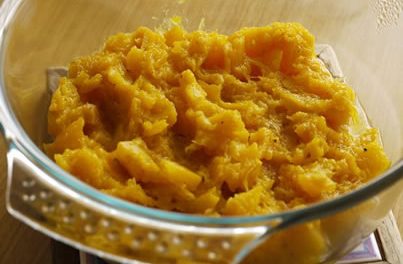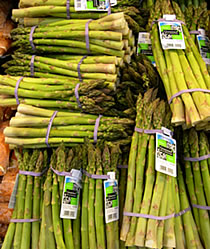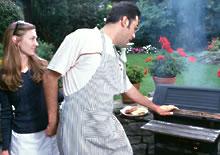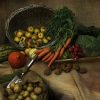The Super Bowl is America's most watched annual television event. And during those hours, a significant number of people eat and drink an extravagant amount of food and drinks - and alcohol is usually a part of it.
When you're living with diabetes, making bad decisions isn't fun when it comes to choosing what to drink. One mistake can have a big difference on your blood sugar levels and how you feel.
This Super Bowl drinking guide includes beer, wine, spirits, mixed drinks and cocktails, shooters, juices, mixers, and non-alcoholic drinks. You'll be able to make an informed decision for just about any drink that comes your way without missing out on the action.
Two things to be mindful of when choosing something to drink are the amount of carbohydrates it provides and whether or not it contains alcohol, which affects blood sugar levels differently for different people.
The following charts show the amount of carbs per serving in beverages commonly served at Super Bowl parties.
| Beverage | Carbohydrate |
| Beer, Lite 12-oz | 5 grams |
| Beer, Regular 12-oz | 12 grams |
| Beer, Dark 12-oz | Up to 25 grams |
| Beer, Non-Alcoholic 12-oz | 5-12 grams |
| Beer, Guinness Draft Pint 16-oz | 17 grams |
| Guinness Draught Bottle 12-oz | 9.8 grams |
| Beer, Guinness Extra Stout 12-oz Bottle | 14 grams |
Coffee Drinks
| Coffee and a Spirit (ie: whiskey, rum, cognac) Per Standard Serving | 8 grams |
| Coffee and a liqueur (ie: kahlua) Per Standard Serving | 11-14 grams |
| Coffee and a Schnapps Per Standard Serving | 8 grams |
| Irish Coffee (Whiskey & Coffee) Per Standard Serving | 8 grams |
| Irish Coffee with Irish Cream Per Standard Serving | 19 grams |
| Regular Coffee with Irish Cream Per Standard Serving | 11 grams |
| Whipped Cream added to a drink Per Tablespoon | 1 gram |
Wines and Spirits
| Wine Cooler 12-oz | up to 30 grams |
| White Wine 5-oz | 4 grams |
| Chardonnay and Pinot Grigio 5-oz | 3 grams |
| White Wine 5-oz | 4 grams |
| White Zinfandel Wine 5-oz | 4 grams |
| Chenin Blanc, Riesling and Semillon 5-oz | 5 grams |
| Dry Red Wine 5-oz | 3 to 4 grams |
| Sweet/Dessert Wine 5-oz | 12 to 20 grams |
| Liqueurs like Amaretto and Kahlua Per Ounce | 17 grams |
| Sambuca, Cointreau, and Bailey's Irish Cream Per Ounce | 5 to 7 grams |
| Vodka Per Ounce | 0 grams |
| Rum Per Ounce | 0 grams |
| Gin Per Ounce | 0 grams |
| Tequila Per Ounce | 0 grams |
| Whiskey Per Ounce | 0 grams |
| Scotch Per Ounce | 0 grams |
| Brandy Per Ounce | 0 grams |
| Cognac Per Ounce | 0 grams |
| Southern Comfort Per Ounce | 3 grams |
Mixed Drinks
Unsweetened vodka, rum, gin, tequila, whiskey, scotch, brandy, and cognac have zero carbs. When added to a zero-carb mixer, such as diet cola, you end up with a zero-carb drink.
| Mixed Drink | Carbohydrate |
| Gin and Tonic Per Serving | 15 grams |
| Rum & Regular Cola Per Serving | 15 grams |
| Rum & Diet Cola Per Serving | 0 grams |
| Black Russian Per Serving | 16 grams |
| Bloody Mary Per Serving | 5 grams |
| Fuzzy Navel Per Serving | 38 grams |
| Frozen Strawberry Daiquiri Per Serving | 44 grams |
| Kamikaze Per Serving | 15 grams |
| Long Island Iced Tea Per Serving | 10 grams |
| Manhattan Per Serving | 2 grams |
| Margarita, Classic Per Serving | 11-25 grams |
| Margarita, Frozen Per Serving | 12-96 grams |
| Mint Julep Per Serving | 8 grams |
| Old Fashioned Per Serving | 5 grams |
| Martini Per Serving | 0-1 grams |
| Mojito Per Serving | 25 grams |
| Pina Colada Per Serving | 30-50 grams |
| Seabreeze Per Serving | 20 grams |
| Screwdriver (vodka & OJ) Per Serving | 19 grams |
| Sloe Gin Fizz Per Serving | 3 grams |
| Tequila Sunrise Per Serving | 15 grams |
| Tom Collins Per Serving | 3 grams |
| White Russian Per Serving | 16 grams |
Shots, or shooters, are usually about 1-1/2 ounces per serving. Here's what to expect for some of the more commonly served shooters.
| Shots / Shooters | Carbohydrate |
| Alabama Slammer 1.5 ounces | 8 grams |
| Amaretto Sour 1.5 ounces | 19 grams |
| Fuzzy Navel 1.5 ounces | 19 grams |
| Jager Bomb 1.5 ounces | 14 grams |
| Jello Shots 1.5 ounces | 3-4 grams |
| Kamikaze 1.5 ounces | 19 grams |
| Mud Slide 1.5 ounces | 19 grams |
| Gin, Rum, Tequila, Whiskey, Vodka 1.5 ounces | 0 grams |
| Snake Bite 1.5 ounces | 1-2 grams |
| Southern Comfort 1.5 ounces | 3 grams |
Non-Alcoholic Options
For non-alcoholic beverages: Select diet sodas, seltzer or club soda instead of regular soda or tonic water. Non-diet sodas can contain as much as 49 grams of carbohydrate per serving compared to zero carbs in a diet version.
| Beverage | Carbs per 8-oz | Carbs per 12-oz |
| Diet Soda | 0g | 0g |
| Regular Soda | 23g | 35g |
| Regular Cream Soda | 33g | 49g |
| Seltzer / Club Soda | 0g | 0g |
| Tonic Water | 22g | 32g |
| Iced Tea, Unsweetened | 0.4g | 0.6g |
| Iced Tea, Sweetened | 22g | 33g |
| Coffee, black | 0g | |
| Coffee with cream & sugar | 15g | |
| Milk | 12g |
For juice choices, watch out for "juice cocktail" juice drinks, which may be a blend of juices and sweeteners. Tomato juice, V-8 juice and grapefruit juice have among the lowest carbs.
If you plan to drink grapefruit juice, make sure it does not interfere with your medications, such as those for high cholesterol and blood pressure.There are also "light" juices available, including Trop 50 and Ocean Spray Light Cranberry Juice, which have less carbs (see the chart below).
| Juice | Carbohydrate per 8-ounces |
| Tomato Juice | 5g |
| V-8 Juice | 10g |
| Grapefruit juice | 11g |
| Grape juice | 19g |
| Orange juice | 26g |
| Orange juice, light (Trop 50) | 13g |
| Apple juice, unsweetened | 29g |
| Passion fruit juice | 32g |
| Pineapple juice | 34g |
| Pomegranate juice | 32g |
| Cranberry juice, regular | 30g |
| Cranberry juice cocktail | 34g |
| Cranberry juice, light (Ocean Spray) | 11g |
Alcoholic Beverages
Most people with diabetes can drink alcohol safely if they drink in moderation, which means an occasional drink or two. But there are some important points to remember. Drinking alcohol on an empty stomach can cause low blood glucose or hypoglycemia. This is a particular risk in diabetics using oral medications or insulin. Low blood sugar can cause shaking, dizziness, and collapse -- which means that some people may mistake your behavior as drunkenness and fail to offer or seek medical attention.
Some oral diabetes medications, like tolbutamide (Orinase) and chlorpropamide (Diabinese, Glucamide), can cause dizziness, flushing, and nausea when combined with alcohol. It is a good idea to contact your doctor, or even your pharmacist, with questions about the safety of drinking when taking these and other diabetes medications.
Finally, don't drink and drive. Depending on how much you weigh, you can be considered an impaired driver after 2 drinks and legally drunk after 3 drinks. If you plan on drinking alcohol, limit yourself and/or find a designated driver. If you want to estimate your blood alcohol content, then try this Blood Alcohol Content Calculator.
One drink is considered:
- 12 ounces beer
- 5 ounces of wine
- 1.5 ounces of hard liquor








